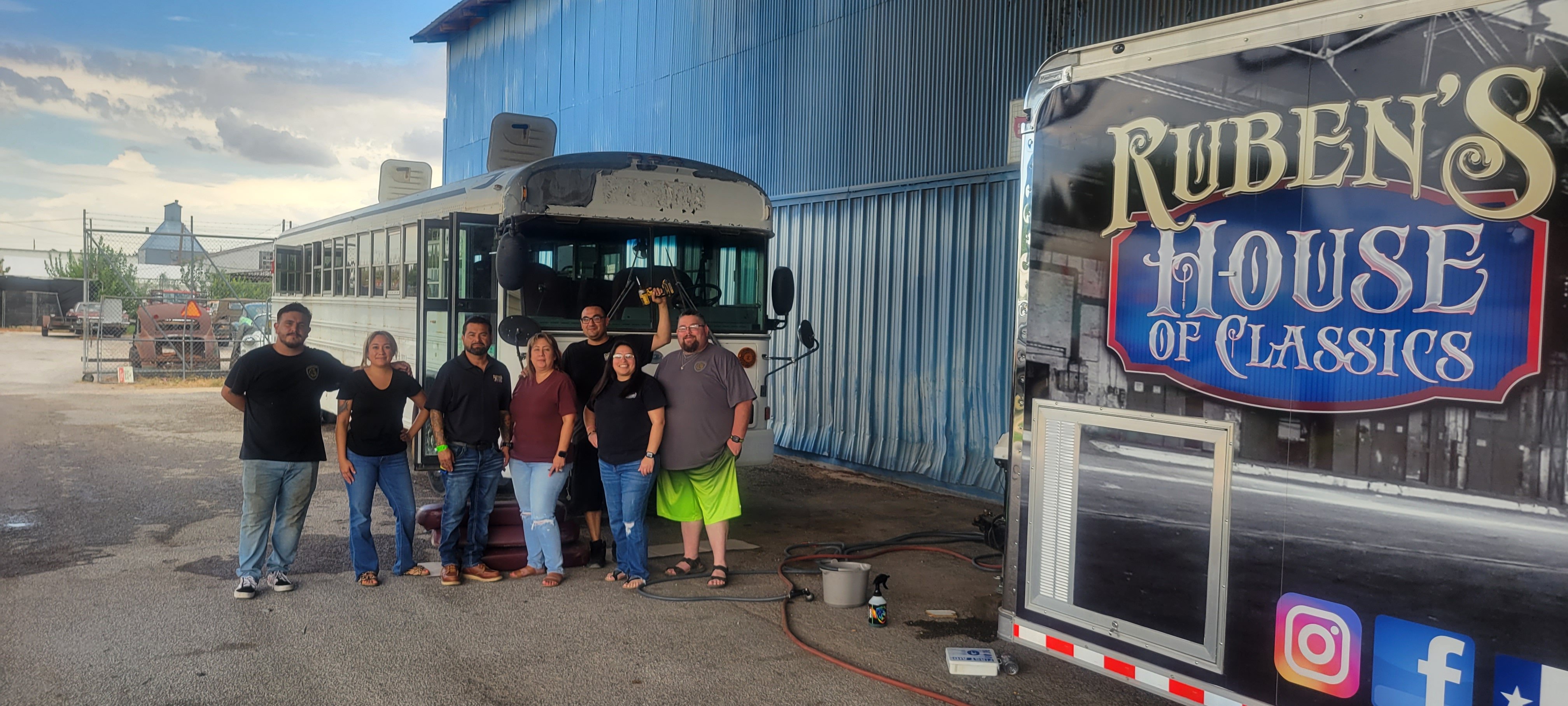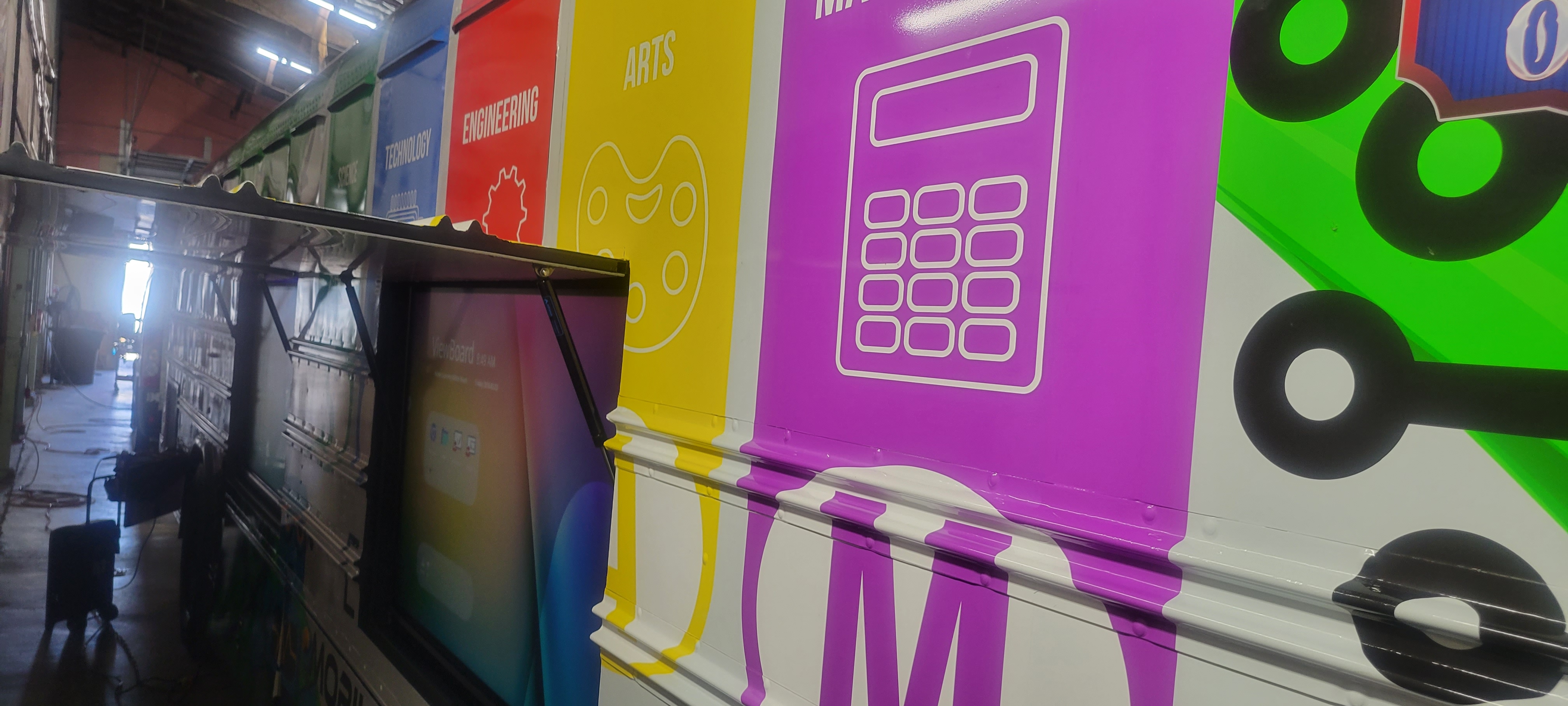When educators at the Wichita Falls Independent School District in Texas began planning to launch a mobile STEM lab by renovating an old school bus, they didn’t realize this type of project already existed in other districts.
“We thought we were coming up with a cool idea for a mobile STEM lab and found out no, there are others out there,” says Dr. Peter E. Griffiths, the district’s associate superintendent.
However, while mobile STEM buses can exist (opens in a new tab) in other districts across the country, the recently introduced STEAM machine remains one of a kind, as does the story of how the school district joined with dedicated community partners to build it.
The idea of the STEAM machine
The idea for the STEAM Machine came from the desire of Griffiths and his colleagues to provide more access to career and technical education (CTE) experiences for students during COVID. Gifted/talented (GT) students in the district had previously had the opportunity to travel to STEM facilities and learn coding and other technical skills, but COVID made that more difficult.
“We started talking about, ‘Wouldn’t it be great if we could take some of this stuff and bring it to schools?’” says Griffiths. They soon realized that they could retrofit an old bus and that the benefits of a mobile STEM lab would provide greater access to CTE and STEM even when COVID restrictions were lifted.
“This is a way that we take what we do for GT kids and bring it to all kids,” Griffiths says.
Someone suggested early on that they call it the STEAM Machine, which reminded Griffiths of the Mystery Machine from Scooby-Doo and it seemed perfect.
Construction and financing of the STEAM machine

Districts auction buses when the vehicles become too old and accumulate too many miles for the stress of daily commuting and transportation. Griffiths and his colleagues decided to divert one of those vehicles that will soon be up for auction. “Give me your ‘best worst’ bus,” Griffiths says the transportation department was asked.
The “best worst” in the district could still function, but it was old and ugly. “It looked like a prison bus,” says Griffiths. Soon, however, the process of transforming that vehicle would begin.
Griffiths contacted Reuben Rodríguez, owner of Reuben’s House of Classics (opens in a new tab), a local auto reconditioning company and explained what they wanted to do. Rodriguez agreed to work with the district on the price as long as they could send CTE students to help with some of the restoration work.
The district was able to secure a $40,000 West Foundation grant for the bus renovations. “Then we use Title IV funds to help pay for all the gadgets and devices that go on the bus,” Griffiths says. “So in the end, we got this whole bus and it cost us nothing in general funds.”
The STEAM machine in action

The STEAM machine looks like a device from a video game or a real-life Lego truck, and doubles as a mobile makerspace. It has two touch screen televisions outside and more devices inside. It comes complete with drones and drone obstacle courses that will help students learn about coding and the fun that can be had with the experience.
“It’s pretty impressive,” says Griffiths. “Those are things that a lot of these kids have never experienced before.”
To operate the bus, the district has hired a retired GTA teacher who will now drive the bus to various schools and participate in different lessons with students and educators. Taking the bus from dream stage to reality has required a lot of perseverance, resilience and collaboration between educators and the community, Griffiths says.
“Coming out of COVID, we were very concerned that children would lose experiences again, and this was a solution,” he says. “COVID is over, but we weren’t going to let this go.”






